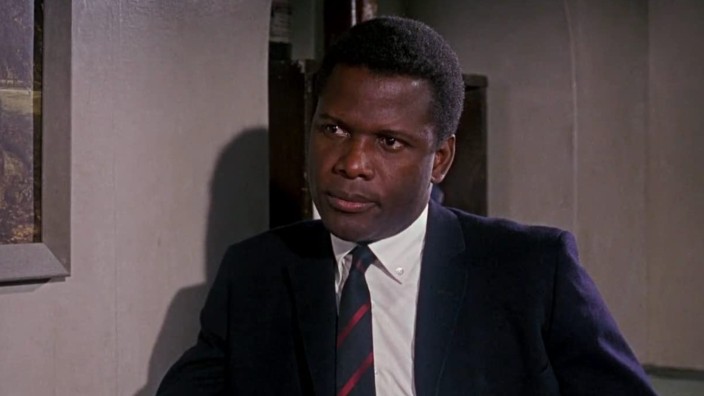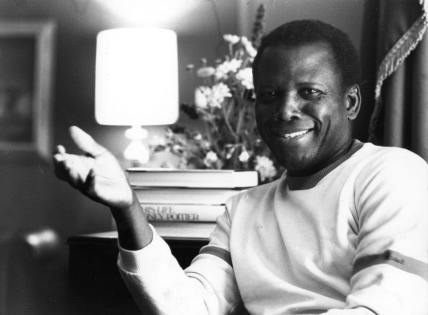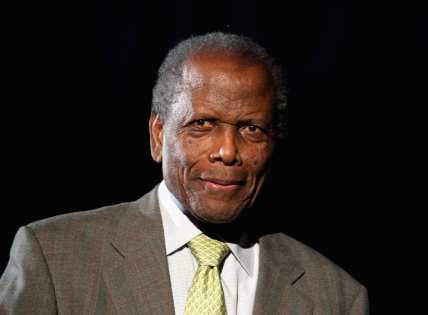Sidney Poitier has many legacies, but his acting should not be lost among them
OPINION: He will rightly be remembered as an aspirational icon and for being nearly the sole representative of African-Americans in mainstream cinema for nearly a decade, but he was first and foremost a phenomenal actor.

Sidney Poitier, one of the last remaining icons of Hollywood’s golden age, has died at age 94. Much ink will be spilled, and rightfully so, about his significance as a cultural icon of the civil rights era who made history at not just the Oscars but at the box office, too.
He will rightly be remembered as an aspirational icon and for being nearly the sole representative of African-Americans in mainstream cinema for nearly a decade. Some will even point out the groundbreaking nature of the latter half of his career when he became one of the most successful Black directors of all time.
But what should not be lost among this great man’s many legacies is the fact that he was first and foremost a phenomenal actor, whose peerless performances almost always rose above the limitations of the roles he had the opportunity to play.
He was with us so long, with a career that spanned so many decades, that to some extent we’ve taken him for granted, and the mythic shadow he cast loomed so large that nearly every Black leading man or leader who came in his wake from Denzel Washington to President Barack Obama would be compared to him and owe a debt to his legacy.

“I felt very much as if I were representing 15, 18 million people with every move I made,” Poitier once wrote. Imagine the weight he must have felt and the pressure he endured to make Black audiences proud while still selling enough tickets to keep the all-white studio bosses happy and willing to finance more projects with him in a leading role. A pretty remarkable burden for the child of Bahamian tomato farmers in an industry that was notoriously racist.
And yet, somehow, amid all the expectations placed on him, Poitier managed to turn in excellent performances again and again and again. His tender role in Lilies of the Field won him his Oscar, but he arguably should have won one for his searing performance as a man embittered by institutional racism in the underrated A Raisin in the Sun, based on the Lorraine Hansberry play.
In 1967, he scored a big hit with his Best Picture-winning In the Heat of the Night—and his “They call me Mister Tibbs” line is justly iconic—but just as memorable is the moment (shocking for its time) where he returns the slap of a racist in the deep South, setting up a blueprint for future Black leading men who would no longer just be shuffling, put-upon figures with no sense of agency.
Some of his most interesting work came in the aftermath of a loud backlash from Black radicals to what had become seen as the safe and sanitized work he’d done in the ’60s at the behest of well-meaning white liberals.
His edgy 1972 revisionist western Buck and the Preacher provides a terrific showcase for himself and the other great Black male icon of the period, Harry Belafonte, in a buddy action-adventure flick that pushes back against the historical whitewashing of the Old West.
The deeply uncomfortable presence of Bill Cosby aside, Poitier’s trio of comedies in the ’70s, starting with the uproarious Uptown Saturday Night, showed new shades of his persona that we mostly didn’t get to see during the first part of his career.
Sometimes, his sheer talent has been overwhelmed in the consciousness of many Americans because of the admittedly important sea change that he represented.
He has been described as “an ambassador to white America and a benign emblem of Black power,” “the Jackie Robinson of Hollywood,” and in one brutal 1967 critique, an “antiseptic, one-dimensional hero.”
Of course, time and distance have made cinephiles far more cognizant of the fact that even so-called liberal Hollywood was largely interested in confining Poitier to a certain type of role. And while that role was not demeaning like those assigned to Stepin Fetchit or Butterfly McQueen, it also had its limitations.
In Guess Who’s Coming to Dinner, a film ostensibly about a white liberal couple’s Herculean effort to overcome the fact that their daughter is marrying a Black man, Poitier had to play as an almost supernaturally flawless human being—a venerated doctor affiliated with the World Health Organization, no less. His work in movies like this is often reduced to adjectives like “dignified,” but another word for it is skillful.
He brought gravitas and a kind of grounded humanity to this and nearly every role he played, and while we are a long way from the racial politics of a movie like To Sir, With Love, that doesn’t make his presence on screen any less dynamic.
Because, with a few notable exceptions, he more or less retired early from film acting—and who could blame him after the wildly productive and successful decades he had in the ’60s and ’70s—for a younger generation of filmgoers, he may remain hopelessly stuck in the past, a black and white avatar of a time of struggle and survival, whose most celebrated films seem too distant and dated to be relatable.
However, this would be a mistake, and it would mean overlooking the nuances of his starring roles as well as the breadth of his body of work.
Hopefully, the sad news of his passing will provide an opportunity for rediscovery, of not just appreciating the icon that was Sidney Poitier, but the tremendous actor he was, too.

Adam Howard is a senior associate producer for “Full Frontal with Samantha Bee” and a producer on the “Full Release with Samantha Bee” podcast. He has written about pop culture, sports and politics for The Daily Beast, Playboy, and NBC News and has recently curated an exhibition of the history of blaxploitation for the Poster House museum in New York City.
Have you subscribed to theGrio podcasts “Dear Culture” or “Acting Up?” Download our newest episodes now!
TheGrio is now on Apple TV, Amazon Fire and Roku. Download theGrio.com today!


